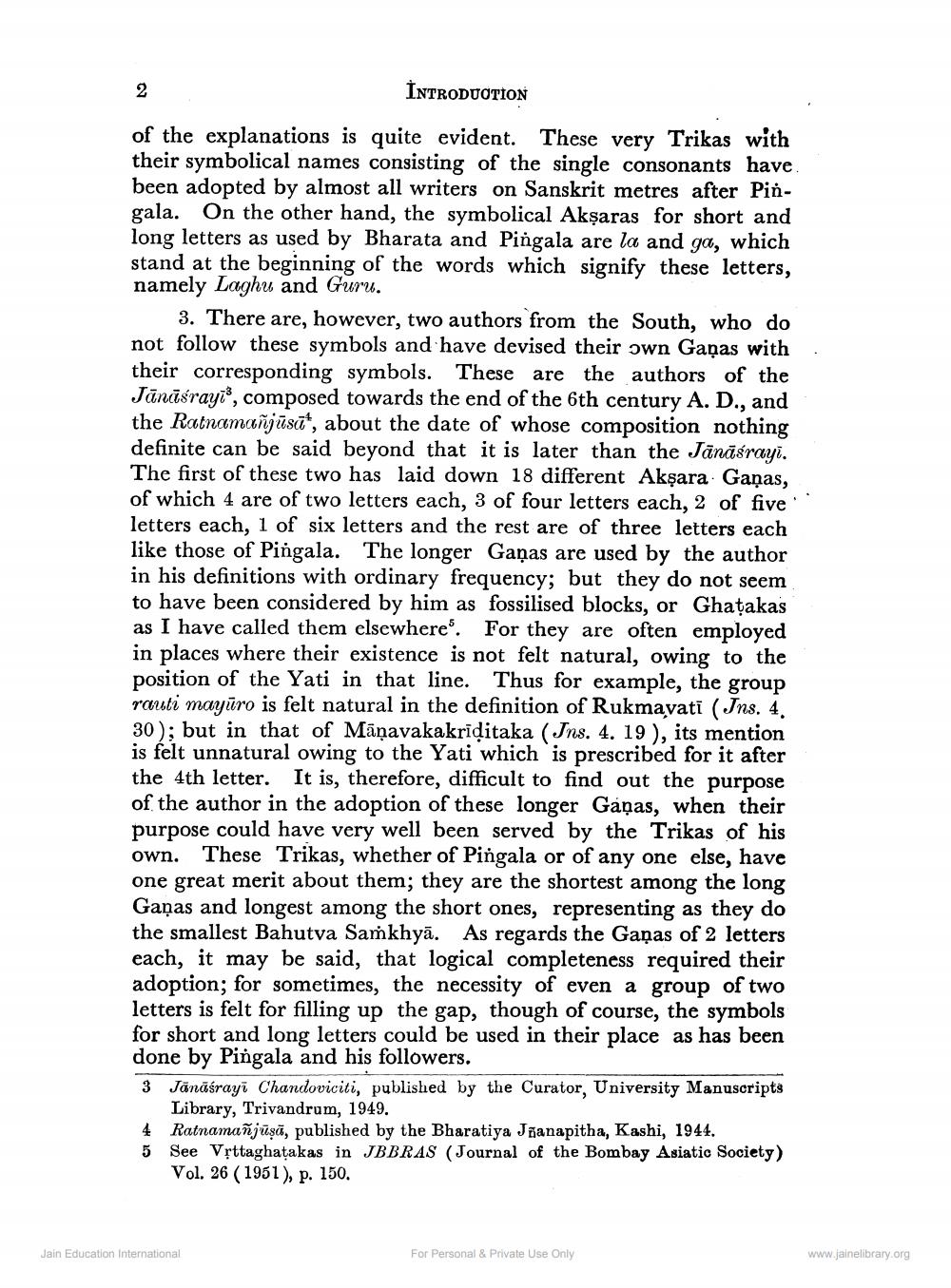________________
INTRODUCTION
of the explanations is quite evident. These very Trikas with their symbolical names consisting of the single consonants have been adopted by almost all writers on Sanskrit metres after Pingala. On the other hand, the symbolical Akşaras for short and long letters as used by Bharata and Pingala are la and ga, which stand at the beginning of the words which signify these letters, namely Laghu and Guru.
3. There are, however, two authors from the South, who do not follow these symbols and have devised their own Gaņas with their corresponding symbols. These are the authors of the Jānāśrayi', composed towards the end of the 6th century A. D., and the Ratnamañjūsā, about the date of whose composition nothing definite can be said beyond that it is later than the Jānāšrayi. The first of these two has laid down 18 different Akşara Gaņas, of which 4 are of two letters each, 3 of four letters each, 2 of five letters each, 1 of six letters and the rest are of three letters each like those of Pingala. The longer Gaņas are used by the author in his definitions with ordinary frequency; but they do not seem to have been considered by him as fossilised blocks, or Ghatakas as I have called them elsewhere. For they are often employed in places where their existence is not felt natural, owing to the position of the Yati in that line. Thus for example, the group rauti mayūro is felt natural in the definition of Rukmayati (Jns. 4. 30); but in that of Māņavakakriditaka (Jns. 4. 19), its mention is felt unnatural owing to the Yati which is prescribed for it after the 4th letter. It is, therefore, difficult to find out the purpose of the author in the adoption of these longer Gaņas, when their purpose could have very well been served by the Trikas of his own. These Trikas, whether of Pingala or of any one else, have one great merit about them; they are the shortest among the long Gaņas and longest among the short ones, representing as they do the smallest Bahutya Saskhyā. As regards the Gaņas of 2 letters each, it may be said, that logical completeness required their adoption; for sometimes, the necessity of even a group of two letters is felt for filling up the gap, though of course, the symbols for short and long letters could be used in their place as has been done by Pingala and his followers. 3 Jānāśrayi Chandoviciti, published by the Curator, University Manuscripts
Library, Trivandrum, 1949. 4 Ratnamañjūsā, published by the Bharatiya Jhanapitha, Kashi, 1944. 5 See Vrttaghatakas in JBBRAS (Journal of the Bombay Asiatic Society)
Vol. 26 (1951), p. 150.
Jain Education International
For Personal & Private Use Only
www.jainelibrary.org




